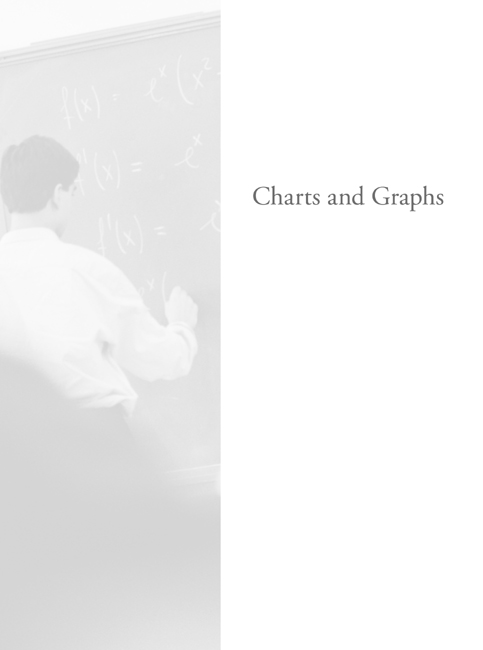
The first step on a Charts and Graphs question is to get familiar with the data. You will often be given two or occasionally even three charts full of information. Just like in a Reading Comprehension question, you may have to scroll down to get to the second chart. Make sure that you always scroll down to see if there is a second chart. The questions would be pretty confusing if you missed a whole chart.
Pay careful attention to footnotes, parentheses, and small print. They almost always include information you will need to read the chart or to answer a question. Take note of the units as well. You won’t need them when you calculate, but you will almost certainly see wrong answer choices that provide the right numbers with the wrong decimal points. If the chart gives you information in thousands or in millions make sure to count your zeros.
The math involved in chart questions is pretty fundamental. Typically it involves fractions, percentages, addition, multiplication, and subtraction. The addition, subtraction, and multiplication will be made more difficult by including large numbers with lots of zeros (information given in thousands, etc.), answer choices expressed in scientific notation, or information taken from multiple charts.
Remember that the answer choices are part of the question. As you go through these drills, note the range in numbers given in your answer choices. The highest answer choices could be double or even five times the size of the smallest answer choice. These questions are ripe for Ballparking. In fact, they are even designed for it. While you will have to do more actual calculating on charts questions than anywhere else on the test, you should never have to calculate all five answer choices; in fact, rarely will you have to calculate more than two. When ETS asks you to find approximately some piece of information, what they’re really saying is, “It’s okay to Ballpark.” If there is a large value range in the answer choices, you should be able to eliminate at least two if not three answer choices by Ballparking, leaving you with only two close answer choices to calculate.
There is one formula to keep in mind for Chart questions. That is the percentage change formula. If a question asks you to find the percentage increase, or percentage decrease, the formula is difference/original × 100. For example, a question may give you the sales figures for company X for the years 1972 through 1986. The question may then ask you which period had the greatest percentage increase in sales. The answer choices will say 1979 to 1980, 1982 to 1983, etc. At least one answer choice will have a percentage decrease. You can eliminate that. One or two others will have very small increases, so you can eliminate those. The remaining answer choices may have the exact, or very close, numerical increases, but differing totals. You should realize that the same numerical increase on a smaller total will yield a greater percentage increase (if you increase the total by one, from five to six, that is a 20 percent increase, but if you increase the total by one from ten to eleven, that is only a 10 percent increase). If you have to calculate, use the percentage change formula. If the sales total in 1982 was 5.4 million and the sales total in 1983 was 6.8 million, then the difference was 1.4 million. Divide that by the original of 5.4 million and you get approximately .26. Multiply this by one hundred and you’re left with a percentage increase of 26 percent. If you don’t want to do the long division, reduce your fraction to +/– ¼ and look for answer choices about 25 percent.
As always, scratch paper is key. Label everything. Not only will you be dealing with multiple pieces of information, but you may be able to use information you found for one question on another question based upon the same chart. Because you will be doing some calculating, that scratch paper can get messy and confusing. Block out some clean space to do your work and label every number you put down. This becomes especially important if you need to check your units. Wrong answers on Charts problems can often be directly traced to sloppy scratch paper and unlabeled information. Don’t be messy.
For more practice and a more in-depth look at The Princeton Review math techniques, check out our student-friendly guidebook, Cracking the GRE.